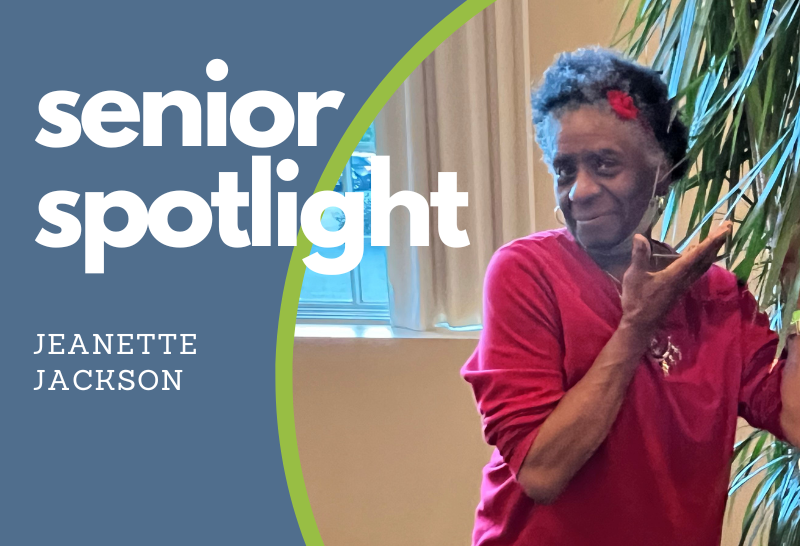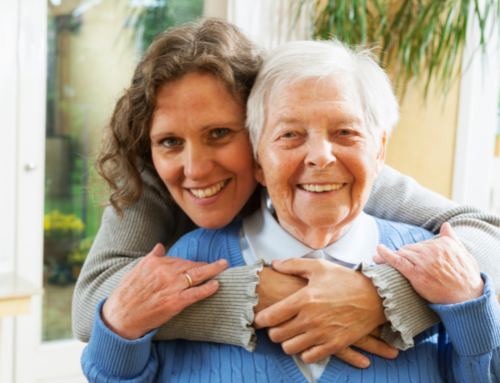How Aging-in-Place Activities Help Mitigate Senior Needs
As our society ages, how can we ensure seniors live healthier, mentally and physically, and more connected lives?
Aging-in-place activities, in-home and community-based, significantly enhance seniors’ lives by addressing three critical challenges: isolation and depression, food insecurity, and caregiving shortages.
Aging-in-place organizations are the grass-roots catalyst to fostering healthier and more connected seniors in our communities.
The Role of Community Activities in Mitigating Senior Issues
1. Isolation and Depression — Social isolation refers to a lack of connections to family, friends, or community, which can lead to loneliness or feelings of being alone regardless of the amount of social contact.
Older adults are at increased risk of loneliness due to the loss of loved ones, disability or worsening quality of life, or lack of access to transportation.
Although it’s hard to measure social isolation and loneliness precisely, there is strong evidence that many adults aged 50 and older are socially isolated or lonely in ways that put their health at risk. Recent studies found that:
- Social isolation significantly increases a person’s risk of premature death from all causes, a risk that may rival those of smoking, obesity, and physical inactivity.
- Social isolation was associated with about a 50% increased risk of dementia.
- Poor social relationships (characterized by social isolation or loneliness) were associated with a 29% increased risk of heart disease and a 32% increased risk of stroke.
- Loneliness was associated with higher rates of depression, anxiety, and suicide.
- Loneliness among heart failure patients was associated with nearly four times increased risk of death, 68% increased risk of hospitalization, and 57% increased risk of emergency department visits.
Some of the ways aging-in-place non-profits mitigate isolation and depression —
- Support Groups: Offering spaces for seniors to share experiences and find emotional support, groups foster a sense of community around shared challenges and provide solutions.
- Daily Visits and Friendly Phone Calls: Regular visits and calls from volunteers ensure seniors have frequent social interactions and a reliable safety net, which is crucial for those living alone and their families.
- Intergenerational Engagement: Programs that connect seniors with younger people, such as mentoring or joint activities, help reduce loneliness and bring a sense of purpose and community involvement.
2. Food Insecurity — the state of not having reliable access to sufficient, affordable, nutritious food—affects many seniors in the United States.
As individuals age, they often face unique challenges that make them particularly vulnerable to food insecurity, such as fixed incomes, decreased mobility, and increased medical expenses. Understanding the scope and impact of this issue is crucial for aging-in-place organizations that play a pivotal role in providing solutions through meal delivery services, community dining programs, and nutrition education initiatives.
- 2.5 million seniors need the necessary services, such as senior nutrition programs.
- Almost three times more likely to have depression
- Over twice as likely to report fair or poor general health
- 89% more likely to report having gum disease
- 78% more likely to have asthma
- 74% more likely to have diabetes
- 71% more likely to have congestive heart failure
- 64% more likely to have experienced a heart attack
Some of the ways aging-in-place non-profits mitigate food insecurity for seniors —
- Meal Delivery Service: DSCC utilizes Meals on Wheels, which ensures seniors receive nutritious meals directly to their homes. This service is crucial for homebound seniors or those with limited mobility and transportation, helping them maintain health and independence without meal preparation stress.
- Community Dining Programs: DSCC’s Senior Dine partners with local restaurants to provide community dining experiences. Seniors use a Senior Dine card for monthly meals, which supports social interactions and provides nutritious meals in a communal setting.
- Health & Wellness Education and Well-being Checks: These programs are designed to keep seniors healthy and informed. Experts use their knowledge to provide relevant and valuable information to seniors regarding nutrition and healthy eating, diabetic health, food trends, and more.
3. Caregiving Shortage — The caregiving shortage is a growing concern as the senior population expands, placing immense pressure on families, resources, and support systems designed for aging adults.
- By 2034, adults 65 and older will outnumber children under 18.
- 61% of family caregivers work either full or part-time.
- Direct care workforce shortages have resulted in more hours of care and higher-intensity care by family caregivers.
- Recruitment and retention are issues with an average caregiver turnover rate of 40-60 percent annually.
Aging-in-place organizations like DSCC play a crucial role in addressing this shortfall by implementing strategies that support seniors directly and bolster the caregiving infrastructure.
Some of the ways aging-in-place non-profits mitigate the caregiving crisis —
- Friendly Visits, Assistance, and Friendly Phone Calls: These services reduce seniors’ loneliness and isolation. Regular friendly visits and phone calls from volunteers provide social interaction and emotional support and help seniors feel connected and valued.
- Minor Home Repairs: This service addresses seniors’ needs to stay independent and in safe living environments by providing minor home repair services. Their living space remains safe and functional, mitigating accidents and enhancing their ability to be independent for as long as possible.
Special Note: Extending Community Support through Volunteering
Aging-in-place organizations rely on volunteers, individuals, and businesses’ generosity and commitment to mitigate isolation further and support our seniors. Everyone can play an essential role in enriching seniors’ lives in the following ways:
- Volunteer for Daily Visits and Friendly Phone Calls: Volunteers who regularly visit or call a senior can significantly brighten their day. These connections provide social connections and a crucial safety check for those who live alone.
- Join the Meals-on-Wheels Delivery Team: Taking up a delivery route to distribute nutritious meals to seniors can be a rewarding way to contribute to the community. This effort ensures seniors receive essential nourishment and offers moments of human connection.
- Participate in Intergenerational Programs: Whether through mentoring programs or shared activities, bringing together younger volunteers and seniors fosters mutual understanding and enriches the lives of all involved, including you. If you are a parent or teacher or work with younger people, this is an excellent opportunity to make a big difference.
Community members can make meaningful commitments by volunteering, while businesses can provide significant support through employee volunteer sign-ups and sustained engagements with aging-in-place organizations.
A Final Thought
Engaging with aging-in-place activities isn’t just beneficial—it’s necessary. These programs directly mitigate the challenges of aging at home by supporting community connections, enhancing health, and promoting independence among seniors.
As it becomes more crucial to support our aging population, the role of local aging-in-place organizations like DSCC becomes increasingly relevant, and your volunteer time makes all the difference.
By delivering meals, connecting with seniors through social programs, helping with home maintenance, supporting pet care and food assistance, or working behind the scenes in administration, you can see firsthand the impact you can have on our community’s seniors aging in place.
Contact DSCC or your local equivalent to see how you can contribute to, volunteer for, or benefit from these essential services.
Together, we can ensure that our seniors living at home live full, engaged lives.
Sources:
- JAMA, Social Isolation and Loneliness in Older Adults, May 2024
- Home Care Association of America, AARP Report on Family Caregivers Details Statistics, Issues, Promising Policies
- The Case for Meals on Wheels, An Evidence-based Solution to Senior Hunger and Isolation, September 2023
- CDC, Alzheimer’s Disease and Healthy Aging, Loneliness and Social Isolation Linked to Serious Health Conditions, April 2021
More Articles That Might Interest You
Someone You Should Know: Lauren Goode
Meet Lauren Goode Thanks to Our Team As we experience another Thanksgiving season, it is important to [...]
Caring For Man’s (and Woman’s) Best Friends
Caring For Man's (and Woman's) Best Friends It's well-documented that pets bring health benefits to their owners. [...]
A Senior You Should Know – Jeanette Jackson
A Senior You Should Know If you’ve been to some of our recent Senior Dance Parties, chances [...]










